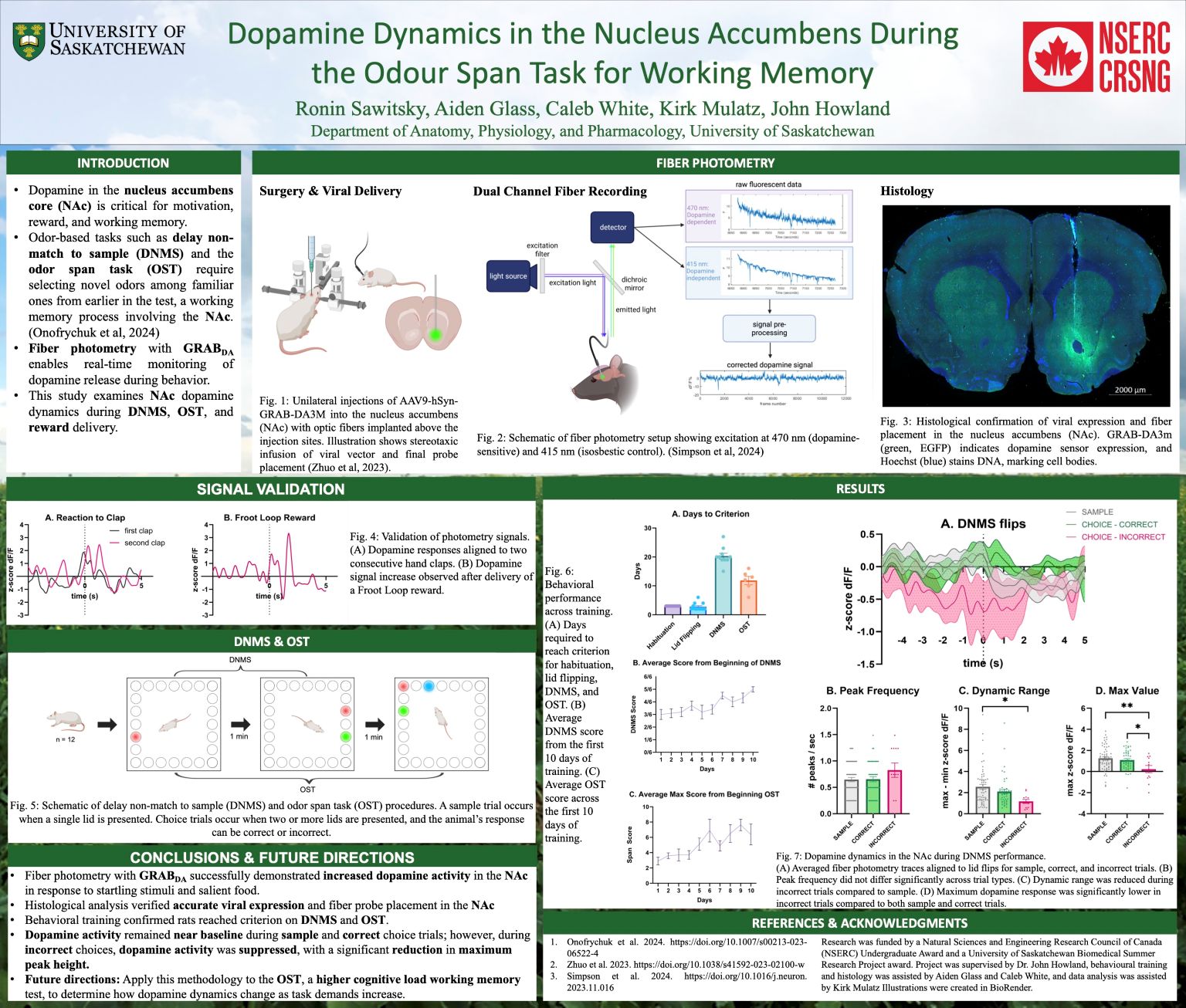
Dopamine Dynamics in the Nucleus Accumbens During the Odour Span Task for Working Memory
Ronin Sawitsky
Dopamine is a neurotransmitter traditionally associated with reward, but it also plays a significant role in motivation and encoding the salience of memories. In particular, working memory—the active process of temporarily holding and manipulating information—has been implicated in dopamine dynamics in the nucleus accumbens (NAc), a brain area involved in motivated behaviours. To further investigate the role of dopamine and the NAc in working memory, we injected a viral vector encoding the dopamine sensor GRAB-DA3m into the NAc of Long-Evans rats, and implanted fiber-optic probes for fiber photometry. This allowed us to measure changes in dopamine release during behaviour trials, which we verified with salient stimuli and reward delivery. Rats were then trained on delay non-match to sample (DNMS) and the odor span task (OST), two odor-based working memory tasks. DNMS requires rats to identify a novel odor after a delay, and OST increases the cognitive load by adding additional odors to remember. Photometry recordings during DNMS revealed that dopamine activity remained near baseline during sample and correct choice trials but decreased significantly during incorrect trials. Ongoing work will apply this methodology to investigate how dopamine dynamics adapt under a higher cognitive load in the OST.
